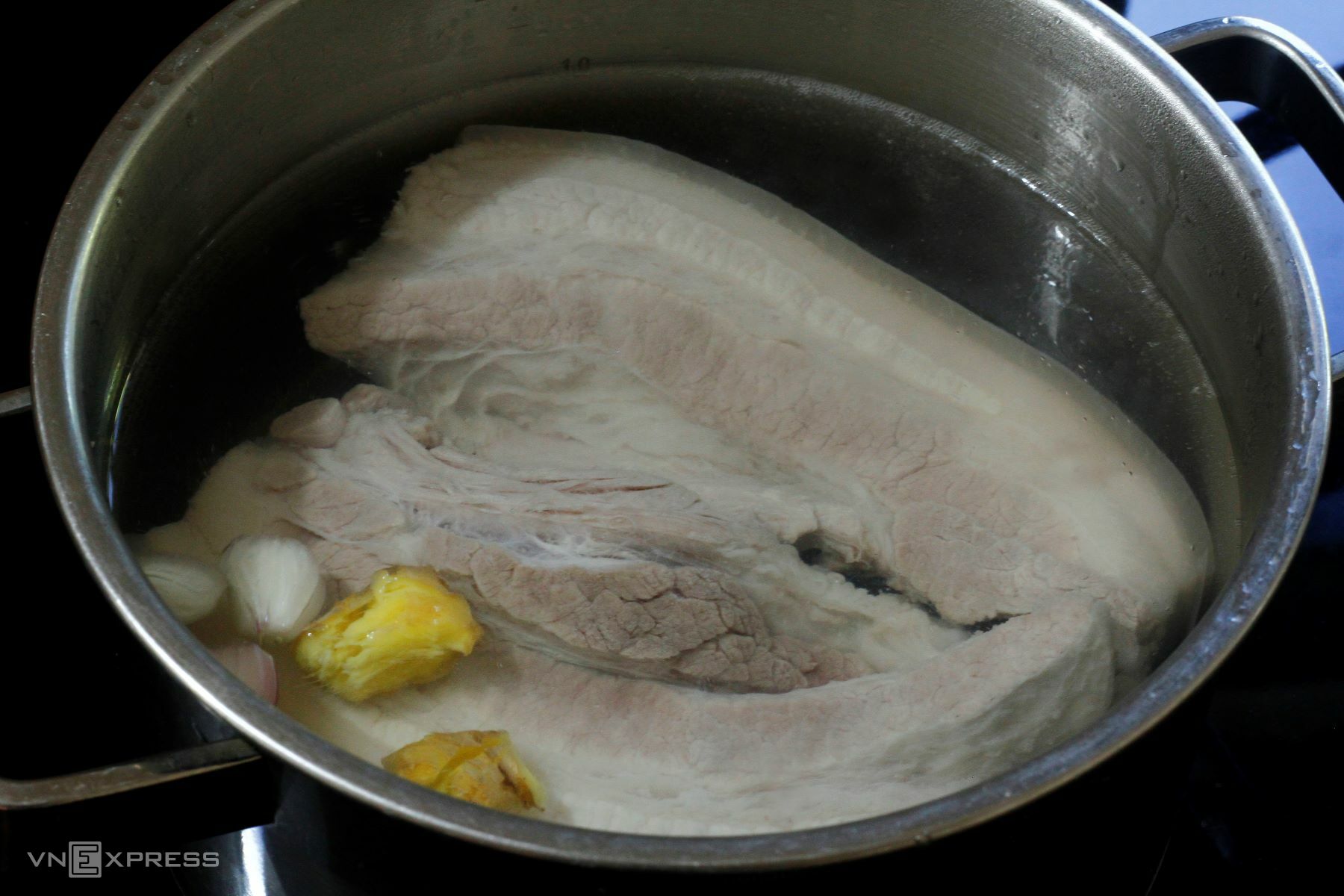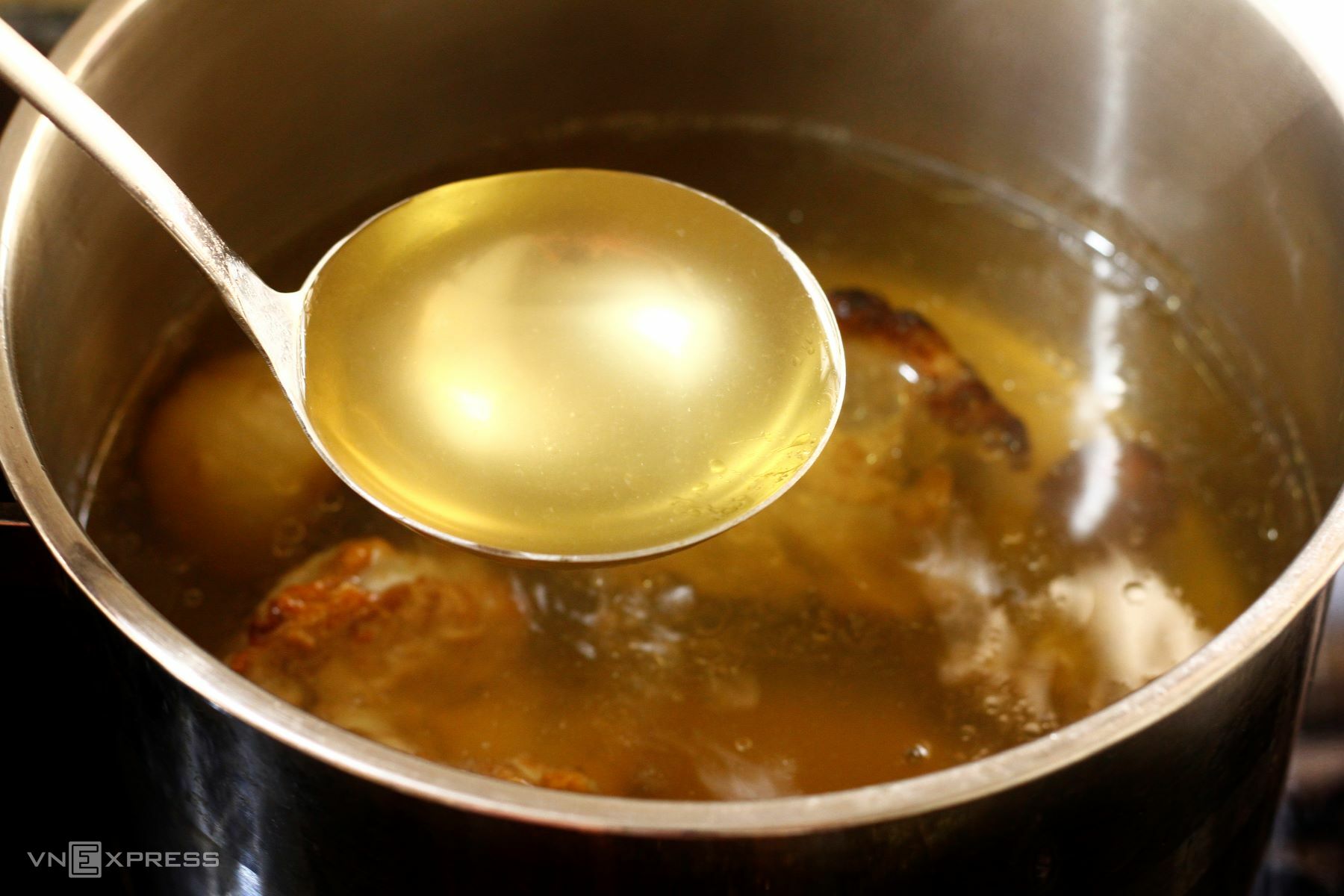In northern Vietnam, chicken broth is often reserved for dishes like mien (glass noodle soup), bun thang (Vietnamese vermicelli soup), or bamboo shoot soup, especially during holidays and Tet (Lunar New Year). People in central and southern Vietnam also use meat broth for vegetable soups like cabbage soup, pumpkin soup, chive soup, and beetroot soup. This practice is both economical and enhances flavor without MSG or seasoning cubes.
 |
Clean meat broth used for soup. Photo: Bui Thuy |
According to Eastern culinary science, each dish balances yin and yang, five flavors, and five elements to harmonize vital energy and nourish the body. Meat, associated with metal, is considered yang, with a salty-sweet taste that can produce heat. The resulting broth also leans towards yang, and without proper balancing ingredients, it can be overly rich. Traditionally, yin ingredients like rau ngot (sweet leaf), various cabbages, pumpkin, and radish are added to meat broth to create harmony. This explains why vegetable soup cooked with meat broth is not only tasty and easy to eat but also easily digestible. Vietnamese cuisine emphasizes the compatibility of ingredients and cooking methods to balance internal and external, hot and cool elements.
However, in modern life, many home cooks are concerned about growth hormones and antibiotic residues in meat, questioning the safety of the broth and opting to discard it.
Nutritionists say that if the meat is properly prepared, the broth is safe to use. It contains dissolved proteins, B vitamins, and minerals like iron, zinc, and potassium, making it a flavorful base for soups and noodle dishes without added seasonings.
 |
Chicken broth used for pho ga (chicken pho) and bun thang. Photo: Bui Thuy |
However, if the meat's origin is unclear or it's not thoroughly cleaned, the initial broth can have an unpleasant odor, contain impurities, and even antibiotic residues. Using this broth without proper handling can not only affect the taste but also pose long-term health risks.
For safety, nutritionists recommend buying meat from reputable sources, washing it thoroughly, and blanching it for one or two minutes to remove impurities that rise with the foam.
Discard this initial water, rinse the meat again, and boil it until cooked. During boiling, regularly skim off the foam to ensure a clear, flavorful broth free of impurities. Adding a few slices of ginger or crushed scallions can enhance flavor and eliminate any remaining odor. While blanching might slightly reduce nutrient content, it ensures the broth is safe for soups and noodle dishes.
For pork belly or fatty meats (older chicken, beef short ribs), skim off excess fat released into the broth. Those who are overweight or have underlying health conditions should limit their intake of this type of broth.
Whether to keep or discard meat broth isn't about right or wrong, but understanding its nature and handling it appropriately. With clean meat, proper preparation, and careful skimming, the broth can become a nutritious and flavorful base for various soups, porridges, and broths.
Bui Thuy












